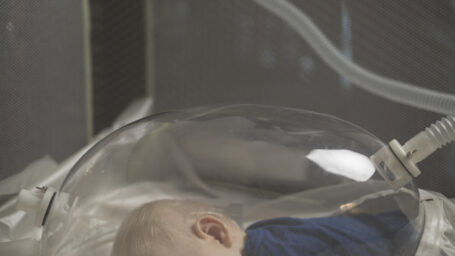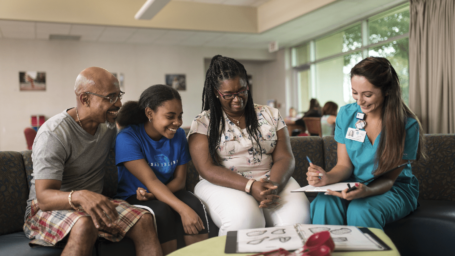Modern Technology
The Arkansas Children’s Nutrition Center Clinical Research Core assists investigators with all aspects of clinical research aimed at improving maternal and child health and development. Our team helps with submitting and monitoring Institutional Review Board applications, recruiting participants, conducting studies, training team members, and collecting, storing and managing data. The Core is equipped with modern technologies to evaluate nutrition, body composition, energy expenditure and to collect biological samples.
The Arkansas Children’s Nutrition Center has a large ~25,000 ft2 clinical facility, which includes the Clinical Research Core directed by Aline Andres Ph.D, RD, Associate Director, Lisa Janson Ph.D., and led by Research Manager Audrey Martinez, MS, RD. The Clinical Core team include full-time recruiters, dietitians, nutritionists, a clinical laboratory technologist, neuropsychology technicians, data managers, registered nurses, and research assistants.
Fully-Equipped for Progress
The Clinical Research Core is equipped with modern technologies to evaluate nutrition, body composition, energy expenditure and to collect biological samples.

The Outpatient Unit
Five clinic rooms, three interview rooms, two testing rooms for psychological and behavioral testing, two indirect calorimetry units and phlebotomy, and more.

The Inpatient Unit
A live-in center, five overnight rooms with fully equipped bathrooms, lounge, large playroom, nurses’ station, dining room, and a kitchen.

The Body Composition Unit
With a BodPod, PeaPod, two DXA instruments and a qNMR custom-built for infants and children

Recruiting, Clinical Nutrition, Biological Sample Lab, and more!
Labs to process human biological samples – placenta, cord, blood, urine, feces, breastmilk, saliva – with all key equipment, plus many more supporting services
Learn More about the Clinical Research CoreAir Displacement Plethysmography
Air displacement plethysmography technology provides a precise and accurate measure of fat mass. The BodPod is used for children and adults while the PeaPod is used for infants up to 6 months old. This technique measures body weight and body volume. The body density obtained from these measures help to estimate body fat and fat free mass that takes about three to five minutes to complete.
Quantitative Nuclear Magnetic Resonance
QMR technology creates contrast between soft tissues by taking advantage of the differences in relaxation times of the hydrogen nuclei spins in these tissues, leading to a precise and accurate measure of body fat, fat free mass and total water. This QMR was custom-designed to accommodate our pediatric population (≤50 kg). Major advantages of this technology include: 3 minute assessment, no radiation exposure or need for immobilization.
Dual Energy X-ray Absorptiometry
The Dual Energy X-ray Absorptiometry technology provides a very precise and accurate measure of bone mass. It can also measure fat and lean body mass. The CRC uses the Hologic Horizon A with visceral core assessment. This technology uses low levels of X-ray to detect differences between bone and soft tissues. Participants need to remain still during the three-minute scanning process.
